4-tert-Butylphenol
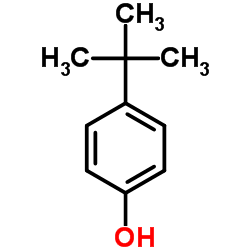
4-tert-Butylphenol structure
|
Common Name | 4-tert-Butylphenol | ||
|---|---|---|---|---|
| CAS Number | 98-54-4 | Molecular Weight | 150.218 | |
| Density | 1.0±0.1 g/cm3 | Boiling Point | 233.7±9.0 °C at 760 mmHg | |
| Molecular Formula | C10H14O | Melting Point | 96-101 °C(lit.) | |
| MSDS | Chinese USA | Flash Point | 110.9±8.2 °C | |
| Symbol |



GHS05, GHS08, GHS09 |
Signal Word | Danger | |
| Name | 4-tert-butylphenol |
|---|---|
| Synonym | More Synonyms |
| Density | 1.0±0.1 g/cm3 |
|---|---|
| Boiling Point | 233.7±9.0 °C at 760 mmHg |
| Melting Point | 96-101 °C(lit.) |
| Molecular Formula | C10H14O |
| Molecular Weight | 150.218 |
| Flash Point | 110.9±8.2 °C |
| Exact Mass | 150.104462 |
| PSA | 20.23000 |
| LogP | 3.17 |
| Vapour Pressure | 0.0±0.5 mmHg at 25°C |
| Index of Refraction | 1.514 |
| Stability | Stable. Incompatible with copper, steel, bases, acid chlorides, acid anhydrides, oxidizing agents. |
| Water Solubility | 8.7 g/L (20 ºC) |
Synonym:Phenol, p-(tert-butyl)-; p-terc.Butylfenol; Butylphen; p-tert-Butylphenol; 4-t-Butylphenol; 4-(1,1-Dimethylethyl)phenol; 1-Hydroxy-4-tert-butylbenzene; Phenol, 4-(1,1-dimethylethyl)-; PTB Section 2 - COMPOSITION, INFORMATION ON INGREDIENTS
Risk Phrases: 36/37/38 42/43 Section 3 - HAZARDS IDENTIFICATION EMERGENCY OVERVIEW
Irritating to eyes, respiratory system and skin. May cause sensitization by inhalation and skin contact.Hygroscopic (absorbs moisture from the air). Potential Health Effects Eye: Causes severe eye irritation. Skin: Causes skin irritation. May cause skin sensitization, an allergic reaction, which becomes evident upon re-exposure to this material. Ingestion: Causes gastrointestinal irritation with nausea, vomiting and diarrhea. Inhalation: Causes respiratory tract irritation. In rare instances, exposure may cause sensitization, resulting in inflammation of the mucous membranes and in eczematous eruptions. Chronic: Repeated or prolonged exposure may cause allergic reactions in sensitive individuals. Section 4 - FIRST AID MEASURES Eyes: Immediately flush eyes with plenty of water for at least 15 minutes, occasionally lifting the upper and lower eyelids. Get medical aid. Skin: Get medical aid. Immediately flush skin with plenty of water for at least 15 minutes while removing contaminated clothing and shoes. Wash clothing before reuse. Ingestion: Never give anything by mouth to an unconscious person. Get medical aid. Do NOT induce vomiting. If conscious and alert, rinse mouth and drink 2-4 cupfuls of milk or water. Inhalation: Remove from exposure and move to fresh air immediately. If breathing is difficult, give oxygen. Get medical aid. Do NOT use mouth-to-mouth resuscitation. If breathing has ceased apply artificial respiration using oxygen and a suitable mechanical device such as a bag and a mask. Notes to Physician: Treat symptomatically and supportively. Section 5 - FIRE FIGHTING MEASURES General Information: As in any fire, wear a self-contained breathing apparatus in pressure-demand, MSHA/NIOSH (approved or equivalent), and full protective gear. During a fire, irritating and highly toxic gases may be generated by thermal decomposition or combustion. Extinguishing Media: Use agent most appropriate to extinguish fire. Do NOT get water inside containers. Use water spray, dry chemical, carbon dioxide, or appropriate foam. Section 6 - ACCIDENTAL RELEASE MEASURES General Information: Use proper personal protective equipment as indicated in Section 8. Spills/Leaks: Clean up spills immediately, observing precautions in the Protective Equipment section. Sweep up, then place into a suitable container for disposal. Avoid generating dusty conditions. Provide ventilation. Do not get water inside containers. Section 7 - HANDLING and STORAGE Handling: Wash thoroughly after handling. Remove contaminated clothing and wash before reuse. Use with adequate ventilation. Minimize dust generation and accumulation. Avoid contact with eyes, skin, and clothing. Keep container tightly closed. Avoid ingestion and inhalation. Do not allow contact with water. Keep from contact with moist air and steam. Storage: Store in a tightly closed container. Store in a cool, dry, well-ventilated area away from incompatible substances. Store protected from moisture. Section 8 - EXPOSURE CONTROLS, PERSONAL PROTECTION Engineering Controls: Facilities storing or utilizing this material should be equipped with an eyewash facility and a safety shower. Use adequate ventilation to keep airborne concentrations low. Exposure Limits CAS# 98-54-4: Germany: 0.08 ppm TWA; 0.5 mg/m3 TWA Germany: Skin absorber Netherlands: 0.1 ppm MAC; 0.5 mg/m3 MAC Personal Protective Equipment Eyes: Wear appropriate protective eyeglasses or chemical safety goggles as described by OSHA's eye and face protection regulations in 29 CFR 1910.133 or European Standard EN166. Skin: Wear appropriate protective gloves to prevent skin exposure. Clothing: Wear appropriate protective clothing to prevent skin exposure. Respirators: A respiratory protection program that meets OSHA's 29 CFR 1910.134 and ANSI Z88.2 requirements or European Standard EN 149 must be followed whenever workplace conditions warrant respirator use. Section 9 - PHYSICAL AND CHEMICAL PROPERTIES Physical State: Solid Color: white to almost white Odor: None reported. pH: Not available. Vapor Pressure: 13 hPa @ 115 C Viscosity: Not available. Boiling Point: 236 - 238 deg C @ 760.00mm Hg Freezing/Melting Point: 96 - 100 deg C Autoignition Temperature: 510 deg C ( 950.00 deg F) Flash Point: 113 deg C ( 235.40 deg F) Explosion Limits, lower: Not available. Explosion Limits, upper: Not available. Decomposition Temperature: Solubility in water: soluble in alcohol and ether Specific Gravity/Density: .9080g/cm3 Molecular Formula: C10H14O Molecular Weight: 150.22 Section 10 - STABILITY AND REACTIVITY Chemical Stability: Stable at room temperature in closed containers under normal storage and handling conditions. Conditions to Avoid: Incompatible materials, dust generation, moisture, excess heat. Incompatibilities with Other Materials: Oxidizing agents. Hazardous Decomposition Products: Carbon monoxide, irritating and toxic fumes and gases, carbon dioxide. Hazardous Polymerization: Has not been reported. Section 11 - TOXICOLOGICAL INFORMATION RTECS#: CAS# 98-54-4: SJ8925000 LD50/LC50: CAS# 98-54-4: Draize test, rabbit, eye: 10 mg Severe; Draize test, rabbit, eye: 50 ug/24H Severe; Draize test, rabbit, skin: 500 mg/4H Mild; Draize test, rabbit, skin: 500 mg/24H Mild; Oral, mouse: LD50 = 1030 mg/kg; Oral, rat: LD50 = 3250 uL/kg; Skin, rabbit: LD50 = 2520 uL/kg. Carcinogenicity: 4-tert-Butylphenol - Not listed by ACGIH, IARC, or NTP. Other: See actual entry in RTECS for complete information. Section 12 - ECOLOGICAL INFORMATION Ecotoxicity: Fish: Fathead Minnow: LC50 = 5.1 mg/L; 96 Hr; UnspecifiedWater flea Daphnia: EC50 = 4.2 mg/L; 24 Hr; UnspecifiedBacteria: Phytobacterium phosphoreum: EC50 = 0.21 mg/L; 5 min; Microtox test Section 13 - DISPOSAL CONSIDERATIONS Dispose of in a manner consistent with federal, state, and local regulations. Section 14 - TRANSPORT INFORMATION IATA Shipping Name: ALKYLPHENOLS, SOLID, N.O.S. Hazard Class: 8 UN Number: 2430 Packing Group: III IMO Shipping Name: ALKYLPHENOLS, SOLID, N.O.S. Hazard Class: 8 UN Number: 2430 Packing Group: III RID/ADR Shipping Name: ALKYLPHENOLS, SOLID, N.O.S. Hazard Class: 8 UN Number: 2430 Packing group: III Section 15 - REGULATORY INFORMATION European/International Regulations European Labeling in Accordance with EC Directives Hazard Symbols: XN Risk Phrases: R 36/37/38 Irritating to eyes, respiratory system and skin. R 42/43 May cause sensitization by inhalation and skin contact. Safety Phrases: S 22 Do not breathe dust. S 24 Avoid contact with skin. S 26 In case of contact with eyes, rinse immediately with plenty of water and seek medical advice. S 28A After contact with skin, wash immediately with plenty of water. S 36/37/39 Wear suitable protective clothing, gloves and eye/face protection. S 37 Wear suitable gloves. S 45 In case of accident or if you feel unwell, seek medical advice immediately (show the label where possible). WGK (Water Danger/Protection) CAS# 98-54-4: 2 Canada CAS# 98-54-4 is listed on Canada's DSL List. CAS# 98-54-4 is listed on Canada's Ingredient Disclosure List. US FEDERAL TSCA CAS# 98-54-4 is listed on the TSCA inventory. SECTION 16 - ADDITIONAL INFORMATION N/A |
CHEMICAL IDENTIFICATION
HEALTH HAZARD DATAACUTE TOXICITY DATA
|
| Symbol |



GHS05, GHS08, GHS09 |
|---|---|
| Signal Word | Danger |
| Hazard Statements | H315-H318-H361f-H411 |
| Precautionary Statements | P201-P273-P280-P305 + P351 + P338 + P310-P308 + P313-P501 |
| Personal Protective Equipment | dust mask type N95 (US);Eyeshields;Gloves |
| Hazard Codes | Xi:Irritant;N:Dangerousfortheenvironment; |
| Risk Phrases | R37/38;R41;R51/53 |
| Safety Phrases | S26-S39-S61 |
| RIDADR | UN 3077 9/PG 3 |
| WGK Germany | 2 |
| RTECS | SJ8925000 |
| Packaging Group | III |
| Hazard Class | 8 |
| HS Code | 2907199090 |
| Precursor 7 | |
|---|---|
| DownStream 10 | |
| HS Code | 2907199090 |
|---|---|
| Summary | 2907199090 other monophenols VAT:17.0% Tax rebate rate:9.0% Supervision conditions:none MFN tariff:5.5% General tariff:30.0% |
|
The EpiOcular Eye Irritation Test (EIT) for hazard identification and labelling of eye irritating chemicals: protocol optimisation for solid materials and the results after extended shipment.
Altern. Lab. Anim. 43 , 101-27, (2015) The 7th Amendment to the EU Cosmetics Directive and the EU REACH Regulation have reinforced the need for in vitro ocular test methods. Validated in vitro ocular toxicity tests that can predict the hum... |
|
|
Convenient QSAR model for predicting the complexation of structurally diverse compounds with β-cyclodextrins
Bioorg. Med. Chem. 17 , 896-904, (2009) This paper reports a QSAR study for predicting the complexation of a large and heterogeneous variety of substances (233 organic compounds) with beta-cyclodextrins (beta-CDs). Several different theoret... |
|
|
Calculating virtual log P in the alkane/water system (log P(N)(alk)) and its derived parameters deltalog P(N)(oct-alk) and log D(pH)(alk).
J. Med. Chem. 48 , 3269-79, (2005) Growing interest in the use of both the logarithm of the partition coefficient of the neutral species in the alkane/water system (log P(N)(alk)) and the difference between log P(N)(oct) (the logarithm... |
| 1-tert-Butyl-4-hydroxybenzene |
| QR DX1&1&1 |
| 4-tert-Butylphenol |
| Phenol, 4-(1,1-dimethylethyl)- |
| MFCD00002367 |
| 4-(2-Methyl-2-propanyl)phenol |
| p-tert-butylphenol |
| EINECS 202-679-0 |
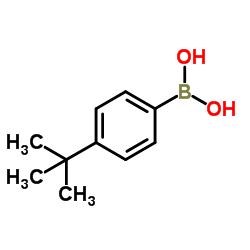 CAS#:123324-71-0
CAS#:123324-71-0 CAS#:3972-65-4
CAS#:3972-65-4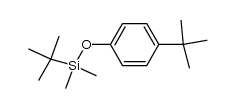 CAS#:226569-78-4
CAS#:226569-78-4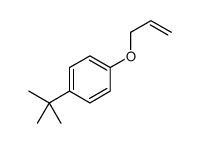 CAS#:24806-16-4
CAS#:24806-16-4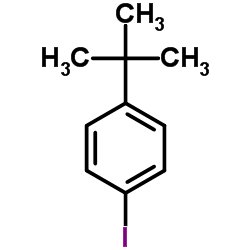 CAS#:35779-04-5
CAS#:35779-04-5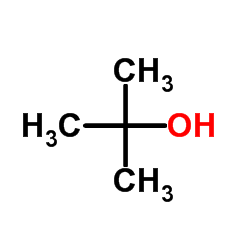 CAS#:75-65-0
CAS#:75-65-0 CAS#:108-95-2
CAS#:108-95-2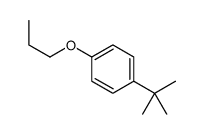 CAS#:108318-78-1
CAS#:108318-78-1 CAS#:3972-56-3
CAS#:3972-56-3 CAS#:3178-22-1
CAS#:3178-22-1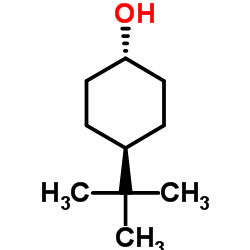 CAS#:21862-63-5
CAS#:21862-63-5 CAS#:937-05-3
CAS#:937-05-3 CAS#:98-53-3
CAS#:98-53-3 CAS#:56108-12-4
CAS#:56108-12-4 CAS#:4097-49-8
CAS#:4097-49-8 CAS#:3279-07-0
CAS#:3279-07-0
